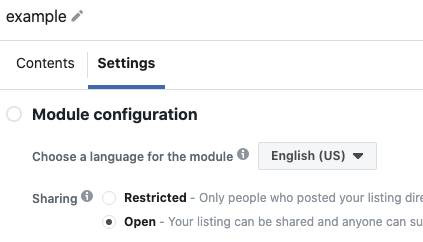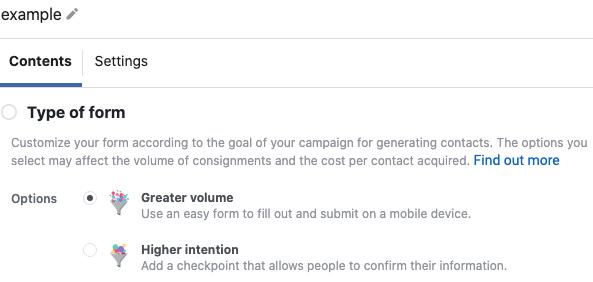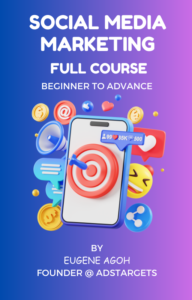What is actually Lead generation Ads Facebook: we hear this marketing term more and more, but what does it represent?
The term lead indicates a contact, as well as an individual or company who has shown interest by sharing contact information, such as e-mail address, telephone number, etc.
Through lead generation, the aim is to acquire the contacts of potential customers interested in the product or service offered by the company.
The lead is therefore a potential customer who decides to release his data-driven by the promise of something “as a gift“.
As a gift, because it is generally a free resource, and suitable to attract the right group of potential customers to which a company wants to sell its products or services, the so-called target.
Lead generation is also mentioned when the user fills out a form to make a request or in any other case releases his / her data to the company, via online or offline channels.
The data that potential customers generally release for this purpose are:
name and surname, telephone number, e-mail address, city of residence, date of birth, job position, needs, preferences.
All these data are very important for web marketing because they allow first of all to get to know the public to whom to turn, and secondly to have the opportunity to get in touch with it continuously over time through continuous communication that will bring to the sale.
Table of Contents
ToggleThe role of lead generation in strategy
Lead generation generally weighs heavily on a web marketing strategy, because in most cases the user does not simply buy after looking at an ad, and its purchase process is much more complex.
1# Data usage
Personal data can be used in so many ways. By collecting the e-mail address, for example, it is possible to use the newsletter to send valuable content to the potential customer that allows him to empathize and gain trust in the brand, recognize that the benefits of the product/service meet his needs, find that the offer is the best on the market.


Through the telephone number, it is possible to establish a telephone contact that eliminates all the barriers and resolves all the doubts of the potential customer before he completes his purchase, generating that empathy and that particular trust that can be established through this channel.
Through the data set such as name, surname, telephone number, email address, city, it is also possible to upload the list of your contacts to Facebook, so that the corresponding Facebook profile is identified and a personalized audience made up of its Leads is created, for re-targeting actions.
There are also other uses that could be made of data, perhaps by sending gadgets and catalogs to the physical address of the potential customer.
#2 Position in the funnel
Funnel (also known as sales funnel or marketing funnel) is the process by which companies guide customers in purchasing products.
The question to ask is: in which part of the funnel should lead generation be inserted?
Answer: from the first.
Why postpone the acquisition of Leads to a later stage of the funnel? This type of activity does not go against the others.
Even when, in the highest part of the funnel, a brand awareness activity takes place, one can at the same time try to acquire contacts, hitting both objectives under the same budget
Certainly in a subsequent phase, focusing exclusively on Lead collection with a branding work behind it, the CPL (Cost per Lead) may be lower, but this does not exclude that you can start collecting data immediately on cold audiences, being of a “conversion” all in all simple for the user.
Acquire Lead on Facebook
It may depend on the sector, but it can be said that Facebook is the best social platform for collecting Leads, thanks to the high number of active users that can be reached every day and its precision in targeting.
Compared with other social networks, the only one that in some cases can keep up with him for the Lead generation is LinkedIn, which is particularly precise in targeting professions and skills.
However, costs per lead are generally high and volumes are lower. In most cases, it won’t turn out to be the best investment.
Advantages Lead generation ads facebook: immediacy and pre-filled fields
Aware of its potential in Lead generation, Facebook has made available to advertisers the Contact generation modules (Lead ads), giving the possibility to collect user information within its own platform in a simple and fast way.
Avoiding the transfer the user on an external landing page that can often present barriers at the level of slow loading, inadequate user experience, manual form filling, especially from mobile.
With Lead ads, these barriers are avoided, because when the user clicks on the ad, a full-screen experience opens immediately within the App (Facebook or Instagram) or a popup from the Desktop.
With the main data of the forum already precompiled because extrapolated from those entered on Facebook by the user (name, surname, email address, telephone number, etc…)
With a few clicks the Lead will have been acquired.
Disadvantages: attention to the quality of the Lead
It must be said that in terms of convenience it could “complicate” the life of the user, asking him to wait for the loading of a landing and manually fill in the form, because this procedure has the effect of “selecting” the Leads discouraging the least interested and getting only the most motivated.
Also, through the Lead ads, adding a considerable amount of text before the form, inserting personalized questions to which the user must necessarily answer before sending his data and providing the control screen with which the user regards and reconfirms the data it is sending.
Despite this, it can be said that the contacts acquired through landing pages have an average quality superior to that of Lead ads.
How do we evaluate the best solution? Here are two questions to ask yourself:
1. where do I get more quality contacts?
2. what will be the cost of managing a contact?
Regarding the first question, we must first of all take into account the quantity of quality leaders. For example, if through Lead ads we acquire 500 Leads of which 300 of quality and, at the same price, through landing page we acquire 300 Lead of which 250 of quality, the first solution will be more convenient (which brings me more interesting Leads for the same investment) even if the average quality is lower.
Regarding the second question, if these contacts will be inserted in an email marketing process managed automatically by a special software, their management cost is quite independent of their quantity.
If, on the other hand, there is customer care that calls up the acquired contacts one by one, dedicating some time to the conversation, the cost of managing the contract could rise considerably, and at that point, the number of non-quality contacts could weigh on the costs.
management and become decisive in the choice between Lead ads and landing pages.
Being able to consider all these aspects, and carrying out any appropriate tests, you will have the opportunity to choose the best way to have Lead generation via Ads Facebook.
How to create a contact generation form
To be able to launch Lead ads on Facebook you must first have created a Contact Generation Form via the page. To do this you need to access the Publishing Tools, select the relevant item and click on the button for creation.
First, you need to choose whether to create a new module or duplicate an existing one. This is also because changes are allowed after finishing and definitively confirming one of them. To make even a slight modification to an existing module, you must duplicate it and finalize a new one.


We give a name to the module (it is not visible to the user) and configure the settings.
First, we select the language, and then we choose whether to limit the possibility of filling out the form only to those who are reached by the ads (with restrictions) or extend it to everyone, even to those who have reached organically thanks to the shares or tags in the comments (open).


Let’s now move on to the Contents, where we will first have to choose the type of module, if with higher Volume or higher Intention.
Here we can set the control screen where the user will have to confirm his data.
With the first option, in fact, Facebook estimates that a greater volume of contacts will be generated.


The next stage is called “presentation”. Here it is better not to be short in the text that anticipates the arrival of the form, so as to clean the Leads more discouraging those who do not even want to read a few more details on what they are requesting.
In this section, in fact, we insert the image that will be shown at the top when the user clicks on the advertisement, the Title that will display immediately after, and the text choosing between paragraph and list format.


Now let’s move on to the Questions section, divided into standard and personalized.
The first is related to information that Facebook can extrapolate from the user’s account and therefore they are potentially pre-filled fields.
Among the many available, we will have to select the information that interests us to acquire.
Personalized questions are not mandatory, but highly recommended.
We are the ones to write the question, and having to answer by selecting an answer, or writing it manually, favours a quality selection of the Lead and can offer more information about it that can be useful for getting to know your audience and for personalizing the communication strategy which will subsequently follow.
Also on the basis of the preferences and needs declared by the potential customer.


We have four types of personalized questions:
- In the short answer one, it is the user who manually writes his answer
- In the multiple choice, we write preset answers among which the user will have to choose one
- With the conditional, we can upload a file that structures dynamic responses that depend on previous answers given by the user
- By appointment request, the user can request one by selecting the available date and time. It is possible to show him a personalized message that can be used to communicate, for example, that he will be contacted for confirmation.
Continuing, it is necessary to insert one or more links that inform the user of the company’s privacy legislation, requesting his explicit consent for those data processing activities where it is mandatory by law.
Finally we come to the completion screen, where we can customize the main message and the information that will be shown to the user once the completed form has been sent.
We can also customize the text of the button below by deciding whether to send the user to visit the website, or to download a file or to call the company directly.
Considering that often the user is encouraged to release his data in exchange for a free resource, with the download function he will have the possibility to download it immediately without having to enter his inbox.
How to launch a Lead ads campaign
Once the contact generation module has been created, we can use it in Lead ads campaigns. In order to launch one, the correct target must be selected.
The possibility of dynamic re-targeting with Lead ads has also recently been introduced, allowing you to select the catalog and show the most suitable article for the person viewing the advertisement.
It is, therefore, an article for which the user has already expressed interest without then proceeding with the request.
Once you have completed all the settings of the ad group, let’s move on to the ad.
When you are in a phase of the funnel in which you have to optimize the number of Leads, it is advisable not to use the video but an image.
The video is not the ideal format for collecting contacts because it focuses the user’s attention on its use rather than on clicking to leave their data.
During the branding activity, however, the video can be an ideal format, and at the same time you can also collect Lead, but the discussion changes because the focus is precisely shifted on brand awareness and not on Lead generation.
Regarding the copy, it is very important to make clear to the user that when he clicks on the advertisement he will have to fill in a data form and send a request. If he is aware of it first, without any surprise effect, he will be more inclined to perform the action.
Where do the contacts go?
When the user fills out a form via Lead ads, his data is saved in a file which the administrators of the Facebook page can access through the Publishing tools of the same, following the same path identified for creating the Forms.
Each module created will have alongside it a series of columns, including the one with the link for downloading contacts.
You can choose to download all the contacts from the beginning, or from the last download made, or in a certain interval of time.
In many cases, there will be a need to transfer this data within email marketing platforms or in Google sheets or in any other application.
To automate this process without having to frequently download the data manually, you can use a special program such as Zapier.
Zapier will check every 5 or 15 minutes (depending on the chosen plan) if new Leads have been acquired and, if so, will transfer the new contacts to the target platform that has been configured.
Conclusions
We have seen the great importance of Leads for companies and why Facebook is, in most cases, the best platform for collecting contacts from potential customers.
Certainly, Lead ads have increased the potential of advertising on Facebook, offering the user many new features at the service of one of the most important and effective actions of web marketing that we have available today: Lead generation.
Being able to understand when to adopt and how to insert the acquisition of Lead in a strategy, and how to correctly use the tools available, is a fundamental skill for a marketer, and it is certainly the basis for a winning strategy.
Are you ready to gain the lead by exploiting the potential of Facebook?
Let us know in the comment section!




